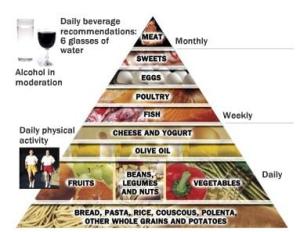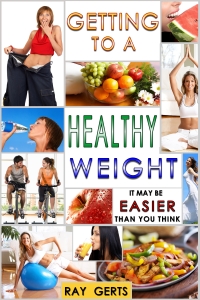I was listening to a radio talk show the other day and a caller was talking about a fast food chain. He was criticizing a hamburger chain and said after he stopped eating their food he started to feel better. He started to lose weight, and he said he wasn’t so depressed all day.
So, I started to think about how I felt when I was heavy and it did feel depressing. I didn’t like the way my clothes fit, I felt self-conscious. I felt like people were staring. I didn’t like eating with others. I had this lonely feeling. That was then and this is now. Today most people are overweight so a person can have that sense of well-being because their friends are the same as they are. Being overweight has become the new normal.
So, what’s wrong with that? Well, the problem is your health. When you’re a young adult, carrying around extra weight doesn’t bother you. You can still be active and in most cases you still have control of your blood pressure, blood sugars, cholesterol and other vitals, so you’re not worried about your weight. But as you get older and see the doctor more often, that’s when you find out what effects the extra pounds have had on your body.
Extra pounds, especially belly fat, will age your body and your organs beyond your real age. You end up being a middle age person in a body that’s 10 years older than you. You will actually shorten your life, the more extra pounds you have, the shorter your life. The extra weight that you put on throughout your adult life is extra strain on your joints and organs. Your organs don’t keep growing just because you gain weight when you reach your adult size, usually age 18 to 22, that’s as big as your joints and organs will ever be and the extra weight will just wear them out.
Monitor your weight regularly and see a doctor if your overweight. Being overweight will also cause diseases like cancer or diabetes just to name a few. And it's not just about your weight; having too much belly fat is dangerous to your health. You don't have to be overweight to have too much belly fat. More important than your weight, is the size of your waistline. The distance around your waist should be half your height. I'm 70 inches tall, my waist should measure 35 inches, no more. Every extra inch you add to your waist will shorten your life.
---------------------------------------------------------------------------------------------------------------------
---------------------------------------------------------------------------------------------------------------------
If you really want to lose the extra flab you can get help, I write 4 blogs and I’ve written two E-books. Read some of my other blog posts.
gettingtoahealthyweight.blog
idropped40pounds.wordpress.com
howbaddoyouwanttoloseweight.blogspot.com
gettingtoahealthyweight.blog
idropped40pounds.wordpress.com
howbaddoyouwanttoloseweight.blogspot.com
E-books are the easiest and cheapest way to learn about any subject without groping through hundreds of website looking for the material you want.My first e-book is “HowBadDoYouWantToLoseWeight” and it sells for $2.99 on most online bookstores like Amazon.com, BN.com, iBook, Kobo.com, Scribd.com, and Gardner books in the U.K.
My second e-book is available in the same stores. And on smashwords.com. If you use the Smashwords' promotional code You can get my second book for $1.99 (TL96R). Just type in the search line “getting to a healthy weight”.

My second e-book is available in the same stores. And on smashwords.com. If you use the Smashwords' promotional code You can get my second book for $1.99 (TL96R). Just type in the search line “getting to a healthy weight”.






